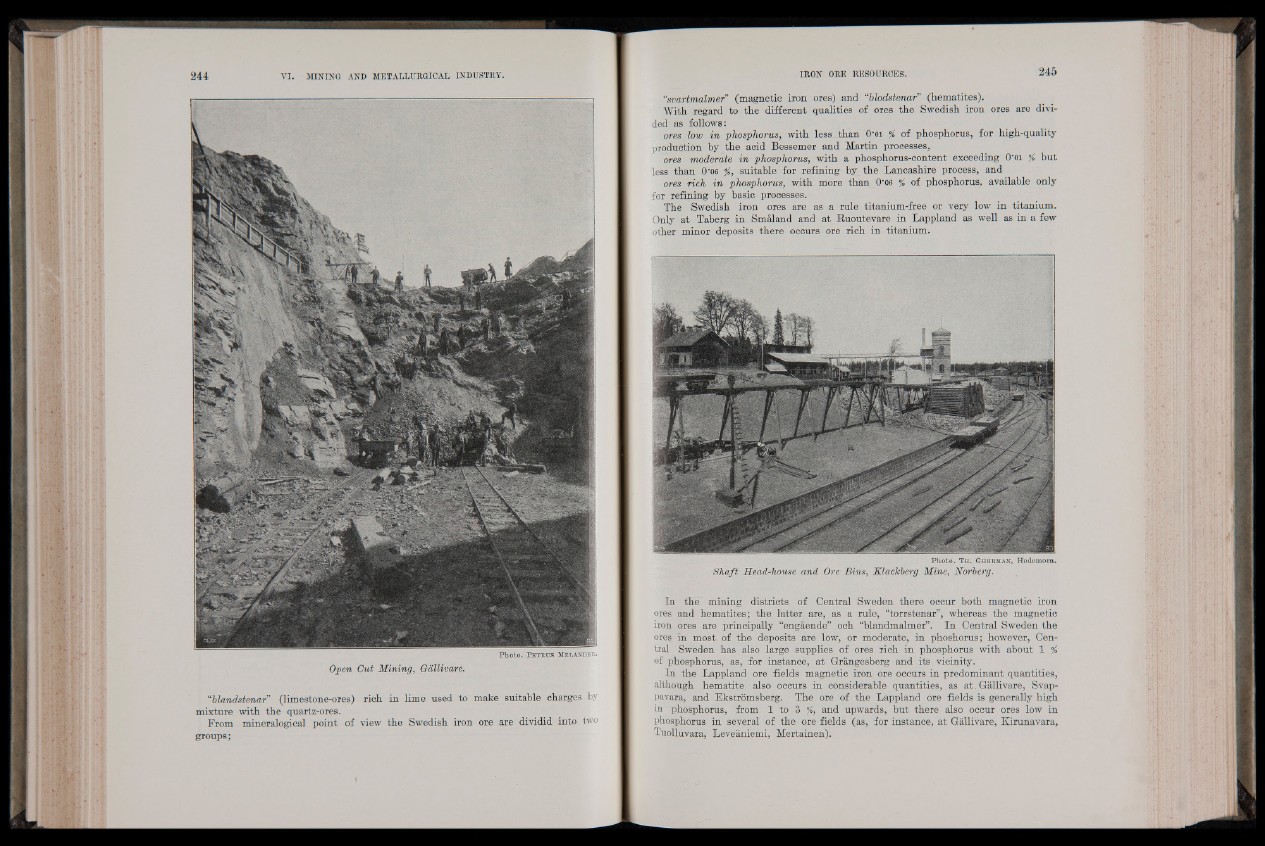
P h o to . P e t r u s Me l a ed e r .
Open Cut Mining, Gallivare.
“blandstenar” (limestone-ores) rich in lime used to make suitable charges by
mixture with the quartz-ores.
From mineralogical point of view the Swedish iron ore are dividid into two
groups;
“svartmalmer” (magnetic iron ores) and “blodstenar” (hematites).
With regard to the different qualities of ores the Swedish iron ores are divided
as follows:
ores low in phosphorus, with less than O'oi % of phosphorus, for high-quality
production by the acid Bessemer and Martin processes,
ores moderate in phosphorus, with a phosphorus-content exceeding O'oi / but
less than 0'06 / , suitable for refining by the Lancashire process, and
ores rich in phosphorus, with more than 0'OG % of phosphorus, available only
for refining by basic processes.
The Swedish iron ores are as a rule titanium-free or very low in titanium.
Only at Taberg in Smâland and at Ruoutevare in Lappland as well as in a few
other minor deposits there occurs ore rich in titanium.
P h o to . T h . Ge h rm a n , H e d e in o r a .
Shaft Head-house and Ore Bins, Klackberg Mine, Norberg.
In the mining: districts of Central Sweden there occur both magnetic iron
ores and hematites; the latter are, as a rule, “torrstenar”, whereas the magnetic
iron ores are principally “engaende” och “blandmalmer”. In Central Sweden the
ores in most of the deposits are low, or moderate, in phoshorus; however, Central
Sweden has also large supplies of ores rich in phosphorus with about 1 /
of phosphorus, as, for instance, at Grangesberg and its vicinity.
In the Lappland ore fields magnetic iron ore occurs in predominant quantities,
although hematite also occurs in considerable quantities, as a t. Gallivare, Svap-
pavara, and Ekstromsberg. The ore of the Lappland ore fields is generally high
in phosphorus, from 1 to 3 %, and upwards, but there also occur ores low in
phosphorus in several of the ore fields (as, for instance, at Gallivare, Kirunavara,
Tuolluvara, Leveaniemi, Mertainen).